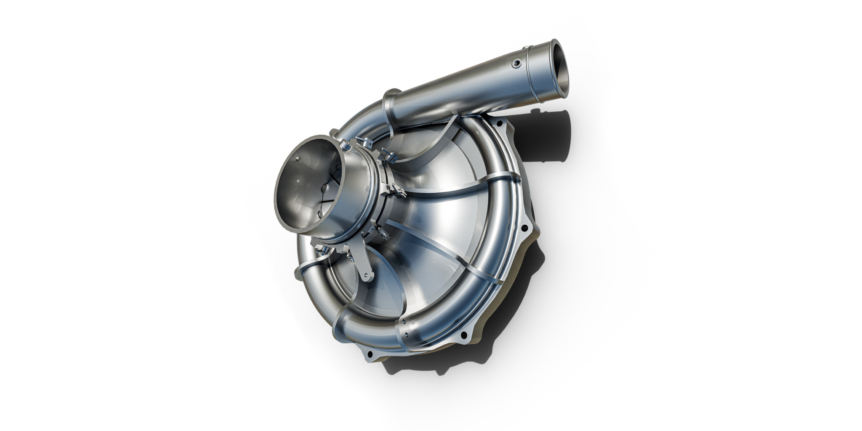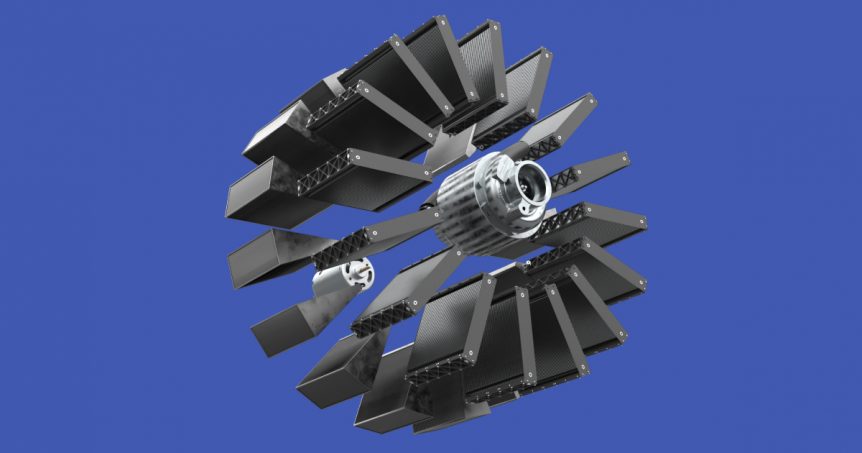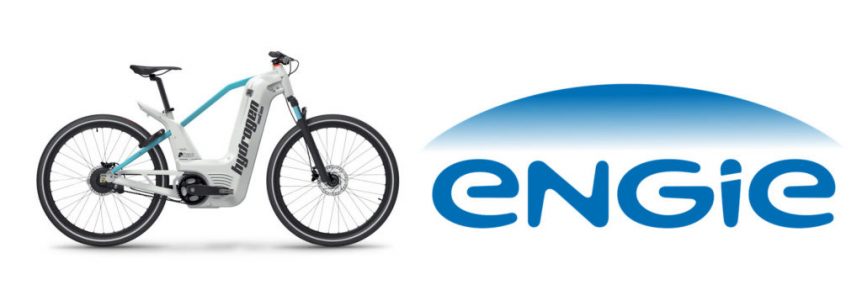Turbo chargers were an early method of increasing power at altitude and that ZeroAvia is crafting for modern electric, fuel-cell powered aircraft. Mechanical Turbochargers During WWII, your editor’s father was a crew chief and occasional flight engineer on C-47’s, B-17’s, and B-24’s. The bombers had turbo-charged engines to increase power as noted below. (This is just part one of three training films, all on YouTube, giving some indication of the difficulties pilots faced in pre-electronic times.) The flight manual for the B-17 includes the following notes on the turbochargers. “The B-17F has four 1200 Hp Wright Cyclone Model R-1820-97 engines of the 9-cylinder, radial, air-cooled type with a 16-to-9 gear ratio. “Each engine has a turbo-supercharger to boost manifold pressure for takeoff and maintain sea-level pressure at high altitude.” B-24’s and other similar craft had the same type of system. (ZeroAvia’s rough equivalent is much quieter and a loss less smoky.) The manual notes the F models had manual control of …
Hypoint’s Radical Radial Fuel Cell Solution
Hypoint proclaims, “We make zero emission air transport possible.” They do this by, “Building a next generation hydrogen fuel cell system that can deliver “Both high specific power: “2,000 Watts/kilogram and high energy density “1,500 Watt-hours/kilogram Exactly what aircraft designers are looking for.” These numbers exceed what the best batteries can manage at this time, and according to the company’s white paper, even better performance is on the way. Batteries vs. Fuel Cells Hypoint proclaims, “The age of zero-emission aviation is currently being prevented by the industry’s reliance on Li-ion batteries, which have a fundamental barrier at the chemistry level.” The firm limits cell performance to 200 Whr/kg, although Bye Aerospace claims 260 Whr/kg for their full battery packs, battery management systems and all. Elon Musk disagrees. CNBC reports, “Tesla co-founder and CEO Elon Musk has dismissed hydrogen fuel cells as ‘mind-bogglingly stupid,’ and that is not the only negative thing he has had to say about the technology. He …
Pragma Triples Kilometers on Hydrogen Fuel-Cell Bikes
Six years ago, we ran a story on hydrogen fuel-cell powered bikes that could travel limited distances, and used canisters of fresh hydrogen to quickly replenish the bike’s energy. Pragma Industries has introduced a much-improved version of that bike, with range up to 150 kilometers (93 miles). A pedelec (the motor kicks in when the cyclist pedals), the bike has a unique look and a compact propulsion system. The system consists of a Brose 36 Volt motor, a 150 Watt PEM (Proton Exchange Membrane) fuel cell, and 150 Watt-hours of lithium-ion batteries in the bike’s down tube. Pragma has a large amount of material on its technologies, including a helpful explanation of fuel cells and their operation, and a great collection of scientific papers on fuel-cell related topics. Business Insider reports, “The firm’s Alpha bike runs for about 100 km (62 miles) on a two-liter tank of hydrogen, a range similar to an electric bike, but a refill …
Solid Carbon Fuel Cell May Mean “Clean Coal”
For transportation, two types of fuel cells come to mind: PEMs or SOFCs. A third variety, DCFCs, may have a place in transport systems, and may have advantages in using “dirty” fuels. PEM (Polymer Electrolyte Membrane – or Proton Exchange Membrane) cells use a solid polymer as an electrolyte and porous carbon electrodes containing a platinum or platinum alloy catalyst. They need only hydrogen, oxygen from the air, and water to operate. They are typically fueled with pure hydrogen supplied from storage tanks or reformers. SOFCs (Solid Oxide Fuel Cells) use a hard, non-porous ceramic compound as the electrolyte. SOFCs are around 60% efficient at converting fuel to electricity. In applications designed to capture and utilize the system’s waste heat (co-generation), overall fuel use efficiencies could top 85%. They operate at high temperatures (1,000° C or 1,830° F). Both PEMs and SOFCs use hydrogen, which must be extremely pure and is therefore often produced at high costs. What if a …
Nissan’s SOFC Vehicle – Just in Time for the Olympics
Two major types of fuel cells vie for vehicle designers’ attention: PEM, or proton exchange membrane types, and solid oxide fuels cells (SOFCs). PEMs (also known as polymer electrolyte membrane fuel cells) require an expensive catalyst such as platinum, and hydrogen as fuel. Hydrogen itself is costly to produce and runs up the operating cost for such a fuel cell. Nissan Motor Co., Ltd. timed things to coincide with the 2016 Olympics opening in Rio de Janeiro, Brazil for the introduction of their solid oxide fuel cell vehicle, a van that runs on bio-ethanol electric power. Nissan’s Carlos Ghosn claims this to be a first, with benefits for potential users. “The e-Bio Fuel-Cell offers eco-friendly transportation and creates opportunities for regional energy production…all the while supporting the existing infrastructure. In the future, the e-Bio Fuel-Cell will become even more user-friendly. Ethanol-blended water is easier and safer to handle than most other fuels. Without the need to create new infrastructure, it …
Hydrogen: Are We There Yet?
Probably not, but we are edging closer to when H2-powered vehicles (including small aircraft) might be as ubiquitous as Prius’s or Leafs – but there are significant barriers to overcome. Fuel cell-powered aircraft might make sense eventually from a physical and economic sense, and while new technologies show promise for EV use, hydrogen power still has barriers to overcome before we’re able to exploit the environmental benefits of hydrogen power. The appeal of a fuel cell to burn hydrogen and leave behind only a light mist of water still dazzles, but teasingly eludes us, not so much from a technical standpoint – but from environmental and economic ones. Two Most Practical Fuel Cells for Transportation Fuel cells come in many varieties, with proton exchange membrane (PEM) and solid oxide fuel cells (SOFC) types heading the list for practical vehicle use. PEM cells, according to Fuelcell.org, “operate at relatively low temperatures, have high power density, and can vary output quickly to …





